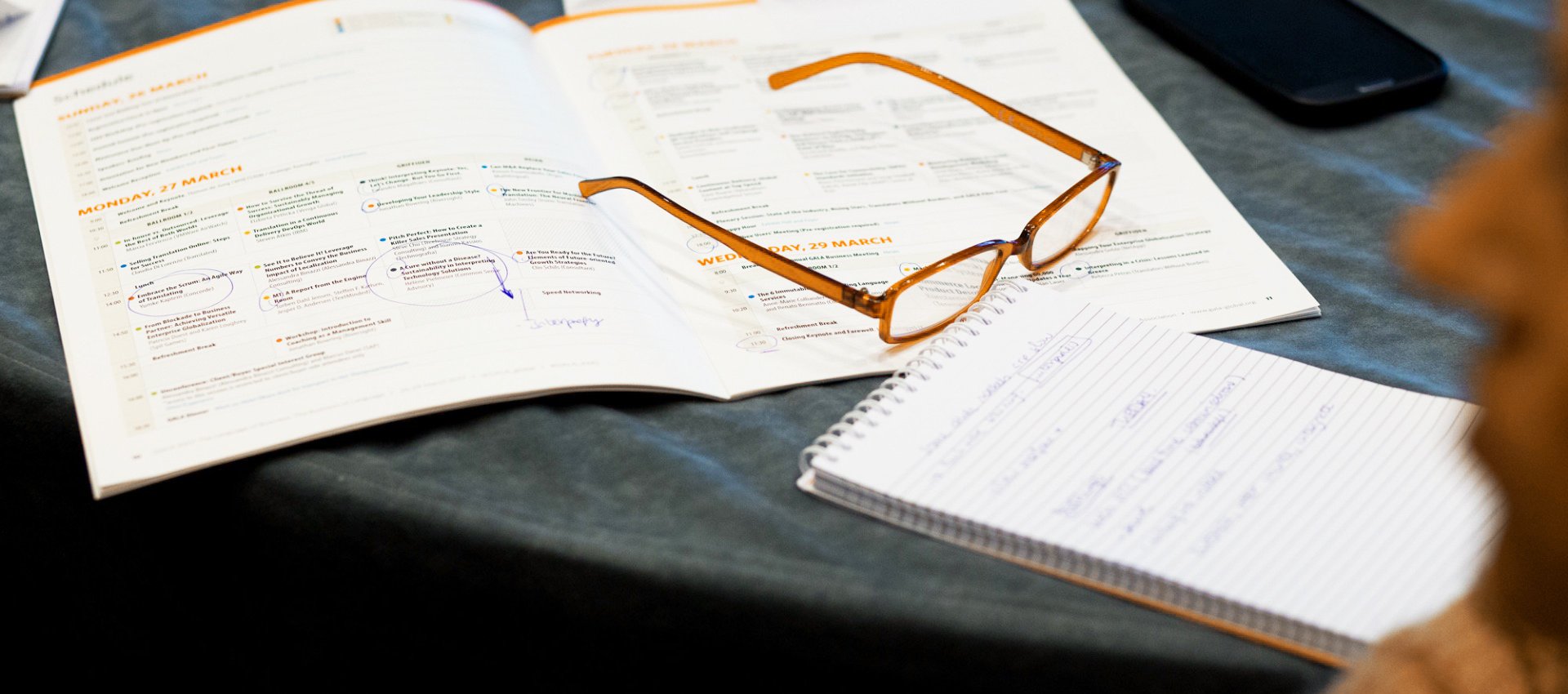- Home
- Resource Center
- Articles & Videos
- Bridging the AI-Human Divide: The MTPE Training SIG Journey
22 April 2025
Bridging the AI-Human Divide: The MTPE Training SIG Journey
When we launched GALA's Machine Translation Post-Editing (MTPE) Training Special Interest Group in 2019, we couldn't have predicted how rapidly AI would transform our industry. What began as an exploration of post-editing challenges evolved into a comprehensive examination of the human-AI partnership in translation. After five years of collaborative work, our journey has culminated in two groundbreaking resources that we're proud to share with the GALA community.
From Post-Editing to AI Integration: An Evolution
The seed for our SIG was planted during a pivotal GALA webinar in May 2020 titled “The Management and Training Challenges of Post-Editing.” The webinar revealed a critical need: while MT technology was advancing rapidly, stakeholders across the industry lacked clear guidance on implementation, training, and standards.
Our initial survey results confirmed what many suspected—despite powerful MT engines, the industry was missing the crucial “how-to” knowledge. Post-editors, LSPs, clients, and academic institutions were all working with different expectations and protocols. The resulting misalignment created friction in workflows, inconsistent quality standards, and unclear compensation models.
“Even with sophisticated technology and powerful MT engines, what was missing was the practical guidance on implementation," notes Viveta Gene. "We needed to develop expertise to train all stakeholders and build common protocols that everyone could embrace.”
A Collaborative Approach to Industry Challenges
What made our SIG unique was its structure and methodology. Rather than approaching MTPE from a single perspective, we divided into subgroups representing different industry segments:
• Academic institutions
• Language service providers
• Client organizations
• Professional post-editors
• AI scientists (added in our 2024 expansion)
With approximately 80 registered members distributed across these stakeholder groups, we created a forum where different voices could contribute equally. This diverse representation ensured that our recommendations addressed real-world challenges from multiple angles.
Lucia Guerrero explains: “The power of our approach was bringing together perspectives that don't often collaborate directly. When you have post-editors, technology developers, and corporate clients all at the same table, you discover that many challenges stem from misaligned expectations rather than technical limitations.”
From MTPE to Tr-AI-ning: Embracing AI's Potential
As large language models and generative AI reshaped the translation landscape in 2023-2024, our SIG evolved accordingly. We rebranded as the “MTPE Tr-AI-ning SIG,” expanding our focus to address AI's transformative impact on the entire localization workflow.
This evolution wasn't merely about keeping pace with technology—it reflected our growing understanding that successful implementation requires more than technical knowledge. It demands a new approach to training, ethics, and cross-functional collaboration.
Our second edition brought AI scientists into the conversation, helping bridge the gap between cutting-edge research and practical implementation. Together, we explored how LLMs are reshaping neural machine translation, and what these changes mean for linguists, project managers, and language technology specialists.
Tangible Outcomes: Resources for the Industry
The proceedings of our SIG meetings have been distilled into two comprehensive resources:
1. A Common MTPE Handbook for Academia, Clients, LSPs and Post-Editors - This handbook addresses fundamental topics including ethics, compensation models, workflows, and job specifications. It provides practical guidelines for implementing MTPE with clear expectations for all stakeholders.
2. AI Language Services: Reshaping NMT with LLMs - This supplement explores how large language models are transforming neural machine translation, offering insights on adapting training and workflows to leverage these new capabilities.
These resources transcend theoretical frameworks and offer practical guidance based on the collective expertise of dozens of industry professionals. They're designed to help organizations navigate the complex intersection of human expertise and AI capabilities.
The Path Forward: Human-AI Collaboration
As we conclude the formal work of our SIG, one insight stands above all others: the discussion around the future of translation should not focus on “replacing humans with AI”, but on “creating effective partnerships between them”.
“Throughout our discussions, we kept returning to a central truth,” says Viveta Gene. “The most effective implementations of machine translation aren't those with the most advanced technology, but those that thoughtfully integrate human expertise at the right moments in the process.”
This human-AI partnership requires new skills, training protocols, and business models—precisely what our handbooks aim to facilitate. By providing a common language and shared expectations across stakeholder groups, we hope to smooth the implementation of these technologies while preserving the quality, creativity, and cultural sensitivity that human linguists bring to the table.
Join the Conversation
While our SIG's formal work has concluded, the conversation continues. We invite GALA members to explore our handbooks, implement the recommendations in their organizations, and share their experiences with the broader community.
The AI revolution in translation is just beginning, and our industry's ability to adapt will determine how effectively we harness these powerful tools. By working together across organizational and disciplinary boundaries, we can create implementation models that benefit clients, language professionals, and technology providers alike.
Expand Your Localization Expertise. Subscribe to Our Newsletter!

Viveta Gene
Viveta Gene has over 20 years of experience in the localization industry and has been at the forefront of machine translation implementation. She co-founded the MTPE Training SIG with a vision to create industry-wide standards for post-editing training and practice.

Lucía Guerrero
Lucia Guerrero specializes in language technology integration and has worked with major LSPs to develop effective machine translation workflows. Her expertise in training programs for linguists has helped bridge the gap between technological capabilities and practical implementation.


